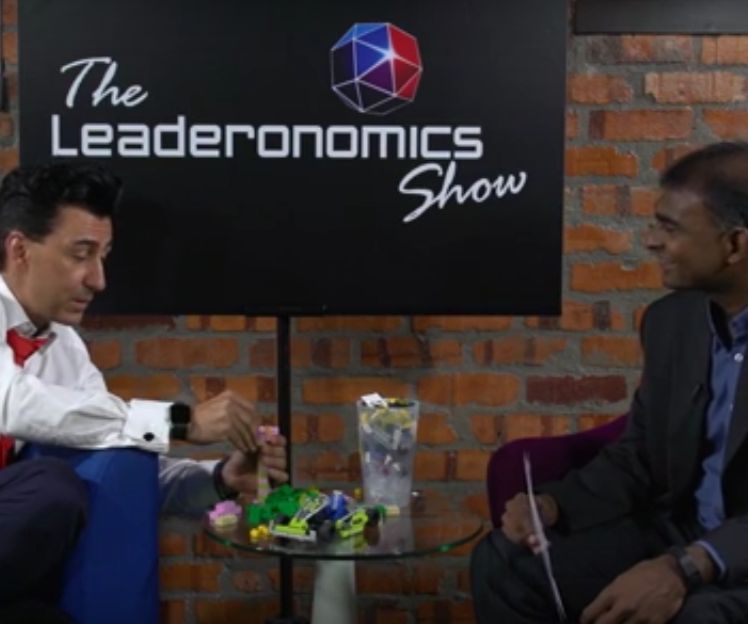Reflect On 2014: Our Walls Talked

 Photo (above): Leaderonomers family photo.
Photo (above): Leaderonomers family photo.
Almost seven months ago, I took a leap of faith, left what many people might have thought was a dream job, and joined a group of amazing individuals. Aside from their technical skills and experience, the thing that inspires me day after day is the undying zeal of Leaderonomers to change the world, and not in that fuzzy dream-sequence-imagination of Utopia, but with a clear direction, the realisation and ability to mobilise the right resources, and that wonderful solidarity and camaraderie that survives storms capable of capsizing larger organisations. I could go on and on, but do read the reflections and lessons learnt from some of this team that I can claim to be part of now, on the topic that affects us all: People.
Vinesh Naidu
1. What was the one big thing you learnt about yourself, or the work of your team in 2014?
There are a lot of pitfalls in working with a client organisation but not in a client organisation. As much as service providers want to make a difference for the client, there are many extenuating factors that can derail the most well-meaning of projects.
So what does it all come down to? Relationships. More importantly, a trusting relationship. The team and I have learnt that having a deep foundation based on trust that we have the best interest of the client at heart will see us through the tough periods.
2. What are the key human resources (HR)issues/trends (maximum three) you have identified for 2015-2020.
HR is going to continue the fight to gain credibility as a business partner. How does HR weave the fabric of connection between strategy and execution seamlessly?
How does HR identify talent within the context of an ever changing business environment that is constantly in flux vis-à-vis urgent skills versus future skills?
3. What is your advice for HR practitioners, job seekers, employees, CEOs, students, youth, parents (pick one or two)?
As a leadership development exponent, I am strongly biased towards leaders taking on a prominent role modelling stance. Leaders cannot expect the culture of their organisation to reflect the words on the mission statement instead of their choices and actions.
Joseph Tan
- What it takes to create sustainable high-performance is a cultural (not competency) strategy to capture the hearts and minds of every employee.
- The role of behavioural economics: A decade ago, the buzzword for achieving performance was quality – now, quality is a given and it is expected.With production processes being more consistent and streamlined, what else can we rely on for higher gains?It is the ability to engage the employee at a behavioural and attitudinal level that will provide new frontiers of performance achievement.
The operationalisation of culture: Everyone knows that changing the culture will effectively change the game. Cultural issues will become more apparent when companies grow, merge and restructure.
As boundaries become seamless, there are technology and skills transfer but when it comes to culture, it might not be so easily transferable. The organisation which will thrive in the future is one which is ‘culture-ready’.
- Advice to CEOs: Do not focus on just the cascading of numbers to drive for growth because this will lead to a silo-mentality and territorialism.Think in terms of creating a culture of accountability where employees are guided more by a sense of personal responsibility rather than by job jurisdiction. The company that succeeds is the company that can engage, not exert.
Lily Cheah
- In 2014, we started the Engagement team, and it has been a fantastic and rewarding journey building it up from scratch. I’ve been reminded of the importance of embracing ‘learning pains’.No growth can occur without some form of discomfort, pain and even some fear of the unknown. Yet the mantra of continuous growth is something we must embrace if we want to even touch the realm of authenticity, innovation and creativity in our work, and grow in our ability to contribute further to our organisation.We’re looking forward to achieving even greater things in 2015, which will definitely include far greater levels of ‘growing pains’! That’s not a bad thing!
- Areas to pay attention to in the coming years, especially in the area of engagement.Non-sterile communication: As individuals who are now ‘numb’ to the experience of regularly being bombarded by content, we have become much more sophisticated and selective about the kind of content we pay attention to.Any communication that is the same-old-same-old will be looked over. As organisations, this means we have to be acutely aware of our identity so that our ‘voice’ (in any form of communication, whether we’re speaking to employees, clients or the public) is clear, consistent with our identity and most importantly, real.
Management of generational differences: As a Gen-Y myself, I continue to (consistently) get earfuls from HR practitioners and business leaders on frustrations of dealing with Gen-Y in the workplace. At the same time, I hear peers airing their own woes in regards to their workplaces.
I believe the skill of successfully uniting and getting the best out of the various generations (with their preferences, habits and all) is a key skill that managers must nail down in the coming years, especially before Gen-Z enters in and muddies the waters even more!
- I’d encourage HR practitioners to look further into the space of employer branding. With so much ‘noise’ around, the employers that stand out to jobseekers today are the ones that have made enough ripples so that they are first in mind.According to the Towers Watson 2014 Global Workforce Study, “image” remains one of the top five drivers of employee engagement in Malaysia.Methods do not necessarily need to be traditional, but the point is that we do need to make some effort at ‘noise’ to communicate who we are, ultimately so that we can attract the right people for our organisations.
Published in English daily The Star, Malaysia, 27 December 2014
Leadership
This article is published by the editors of Leaderonomics.com with the consent of the guest author.





